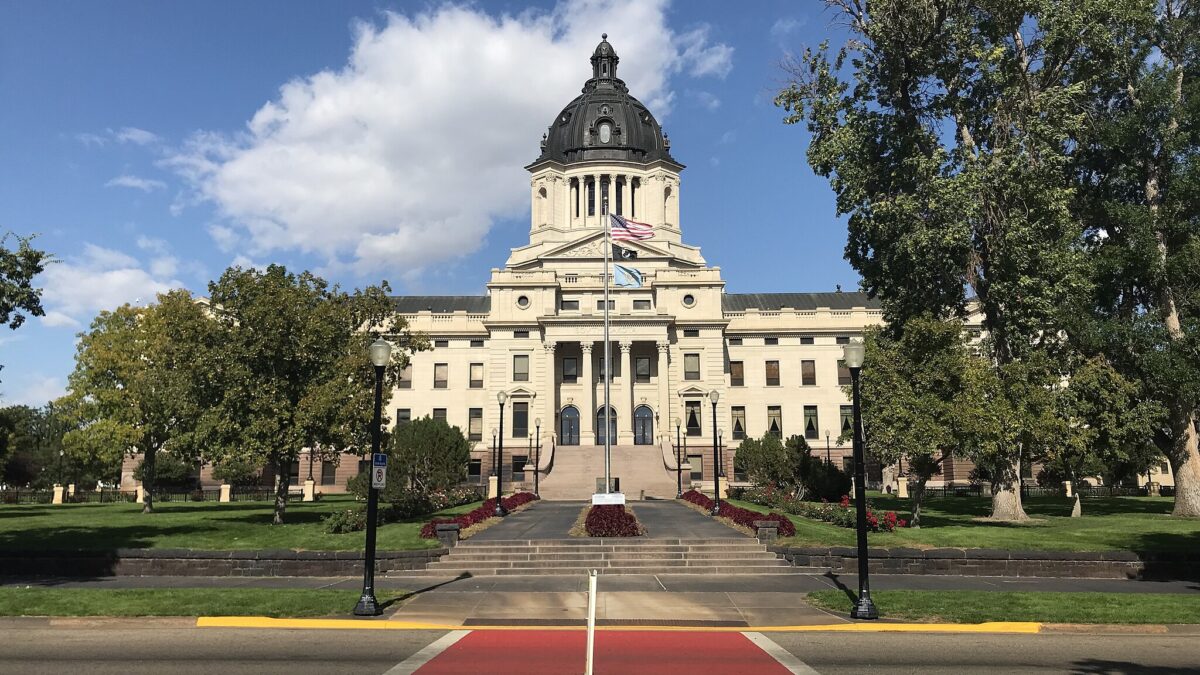After losing all seven state abortion referendums since Roe v. Wade was overturned, pro-lifers have received another dose of bad news. In ruby-red South Dakota, a recent poll found that 53 percent of voters, including 46 percent of Republicans, support a ballot measure that would set up a trimester system for legalizing abortion (similar to Roe), while just 35 percent oppose it, a notable shift from the 46-44 advantage the pro-abortion side had in November. But pro-lifers cannot give up on this race just yet.
South Dakota may not be the most populous state, but it represents the best opportunity for a victory in the near term (along with Florida, though only because amendments need 60 percent to pass in the Sunshine State). Despite the bad poll, there are genuine reasons for optimism.
If calculated using former President Donald Trump’s vote margin in 2020 (a simplistic measure, but adequate for this analysis), South Dakota will be the reddest state yet to have an abortion referendum. Currently, that title belongs to Kentucky, which has a Trump margin of about 0.2 percent less than South Dakota. In 2022, the pro-abortion side won by about 5 points in Kentucky’s referendum, suggesting that partisanship alone will not carry the pro-life side to victory. However, Kentucky’s referendum was in a midterm year, and turnout was about 70 percent of what it was in 2020.
In a presidential year, the pro-abortion side will need an even higher proportion of voters to split their tickets to secure a win. Higher turnout should benefit the pro-life side in a state as red as South Dakota, and immediate focus needs to be given to shoring up support among Republicans. While she may not be pro-life when it comes to puppies, Gov. Kristi Noem has been quite strong on this issue. Perhaps she could rehabilitate her image with a kindness-oriented campaign against the amendment. If not Noem, perhaps Sen. John Thune of South Dakota, seeking to become Republican leader in the Senate, could display some political skill and maneuver his political machine to help conservatives score a win.
Status Quo Bias
In addition to partisan lean, the pro-life side should benefit from “small c” conservatism on this referendum. Status quo bias is a powerful phenomenon in politics. People tend to be skeptical of change, and the side preserving the status quo tends to overperform polling. Practically, this means it is generally better to be the “no” side in a referendum. In Kentucky, the pro-abortion side benefited from status quo bias. If it passed, the referendum would have amended the Kentucky Constitution to say that “nothing in this Constitution shall be construed to secure or protect a right to abortion or require the funding of abortion,” but the “no” side winning did not change anything. Kentucky’s abortion ban remained in effect, though pro-lifers are concerned about potential future court cases.
In South Dakota, the pro-life side will benefit from status quo bias. A “yes” win would amend the South Dakota constitution and set up a trimester system that would effectively legalize abortion during the first two trimesters and allow for restrictions (though still with broad exceptions for the mother’s health) in the third trimester. A “no” win would change nothing. South Dakota’s abortion ban would remain in place, but theoretically the state legislature could implement any system it wished.
Other Factors in Favor
Finally, the pro-abortion side has generally outspent the pro-life side by vast margins. This has happened in both blue and red states, and it happened in Kentucky, where the pro-life side was outspent by about 6:1. As of now, this hasn’t happened yet in South Dakota, with the two sides running fairly even. South Dakota is not a state that requires an enormous amount of funding, and pro-lifers should not be caught flat-footed again. The days of 6:1 (or even sometimes 10:1) spending deficits should be over, especially in a small red state like South Dakota. Between partisanship, status quo bias, and fundraising parity, the structural elements of a referendum have never been better for pro-lifers.
Worth Trying to Win
South Dakota is a small state, but it is worth it for pro-lifers to go all in to win there. The referendums in Maryland and Colorado are already lost, and Florida will be an uphill (and expensive) battle, even with the 60 percent threshold for amendments. This race is easy to fund and unlikely to get too much attention from national Democrats. It also may be the only thing between pro-lifers and a 0-11 record on ballot measures (or worse, if more states add abortion referendums).
With the GOP already waffling on abortion, another winless year could make political support even harder to come by in the future. The thousands of lives that will be saved are of course the most important result of a win in the referendum, but the symbolic value of a much-needed victory matters as well.









